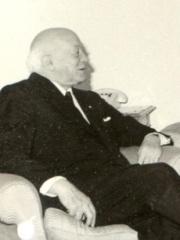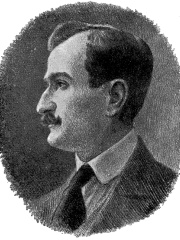


The Most Famous
INVENTORS from Romania
This page contains a list of the greatest Romanian Inventors. The pantheon dataset contains 354 Inventors, 3 of which were born in Romania. This makes Romania the birth place of the 20th most number of Inventors behind Slovakia and Netherlands.
Top 3
The following people are considered by Pantheon to be the most legendary Romanian Inventors of all time. This list of famous Romanian Inventors is sorted by HPI (Historical Popularity Index), a metric that aggregates information on a biography’s online popularity.

1. Henri Coandă (1886 - 1972)
With an HPI of 61.10, Henri Coandă is the most famous Romanian Inventor. His biography has been translated into 30 different languages on wikipedia.
Henri Marie Coandă (Romanian pronunciation: [ɑ̃ˈri ˈko̯andə] ; 7 June 1886 – 25 November 1972) was a Romanian inventor, aerodynamics pioneer, and builder of an experimental aircraft, the Coandă-1910, which never flew. He invented a great number of devices, designed a "flying saucer" and discovered the Coandă effect of fluid dynamics. In the 1950s, Coandă inflated his importance in aviation history, describing falsely how he had invented the air-breathing jet engine and incorporated that design into the Coandă-1910 aircraft. However, his ducted engine design, the "turbo-propulseur", was described in its patent as working the same way with either water or air running through.

2. Orban (1404 - 1453)
With an HPI of 55.96, Orban is the 2nd most famous Romanian Inventor. His biography has been translated into 19 different languages.
Orban, also known as Urban (Hungarian: Orbán; died 1453), was an iron founder and engineer from Brassó, Transylvania, in the Kingdom of Hungary (today Brașov, Romania), who cast large-calibre artillery for the Ottoman siege of Constantinople in 1453. Orban was Hungarian, according to most modern authors, while some scholars also mention his potential German ancestry. Alternative theories suggest he had Wallachian roots. Laonikos Chalkokondyles used the term Dacian to describe him. He had offered his services to the Byzantines in 1452, a year before the Ottomans attacked the city, but the Byzantine emperor Constantine XI could not afford Orban's high salary nor did the Byzantines possess the materials necessary for constructing such a large siege cannon. Orban then left Constantinople and approached the Ottoman sultan Mehmed II, who was preparing to besiege the city. Claiming that his weapon could blast 'the walls of Babylon itself', Orban was given abundant funds and materials by the sultan. Orban managed to build the giant gun within three months at Adrianople, whence sixty oxen dragged it to Constantinople. Orban also produced other, smaller cannons used by the Turkish siege forces. Bombarding technology similar to Orban's had first been developed for the Hungarian Army. It rose in popularity during the early 1400s all over western Europe, transforming siege warfare. Examples of pieces similar to Orban's productions like the Faule Mette, Dulle Griet, Mons Meg and the Pumhart von Steyr are still extant from the period. Orban, along with an entire crew, was probably killed during the siege when one of his cannons exploded, which was not an unusual occurrence during that time.

3. Traian Vuia (1872 - 1950)
With an HPI of 55.10, Traian Vuia is the 3rd most famous Romanian Inventor. His biography has been translated into 24 different languages.
Traian Vuia or Trajan Vuia (Romanian pronunciation: [traˈjan ˈvuja]; 17 August 1872 – 3 September 1950) was a Romanian inventor and aviation pioneer who designed, built, and tested the first tractor monoplane. He was the first to demonstrate that a flying machine could rise into the air by running on wheels on an ordinary road. He is credited with a powered hop of 11 m (36 ft) made on 18 March, 1906, and he later claimed a powered hop of 24 m (79 ft). Though unsuccessful in sustained flight, Vuia's invention influenced Louis Blériot in designing monoplanes. Later, Vuia also designed helicopters. A French citizen from 1918, Vuia led the Romanians (especially Transylvanians) of France in the Resistance during World War II. He returned to Romania just before his death in 1950.
Pantheon has 3 people classified as inventors born between 1404 and 1886. Of these 3, none of them are still alive today. The most famous deceased inventors include Henri Coandă, Orban, and Traian Vuia.







